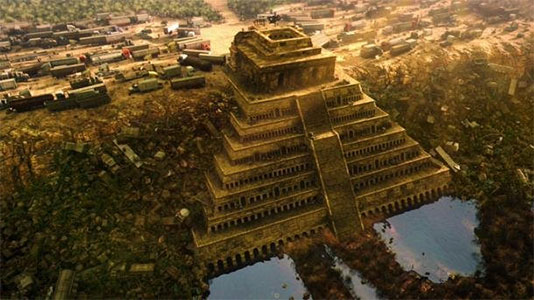This is a followup to this question about city building on flood plains.
There is a civilization that developed along the rich varzea flooded forests of an enormous rainforest river, larger than the Amazon. This civilization is dispersed into many tiny villages practicing seasonal agriculture and fishing; almost all transport through the forest is done by boat. There are great trade centers at the crossroads where the rivers meet in the dry season; because of the 15m flood levels, these centers are built on raised mounds so they stay when the wet season turns the forest into a giant lake.
The mounds are built piece by piece first by driving logs into the damp earth in a ring and filling with dirt. As cities get wealthier, they can afford to purchase and transport stone blocks from the mountain kingdom to the south. The blocks are used to form an outer ring around the city mound. The Earth inside the blocks is compacted by constant use, and occasionally filled by hammering pilings into it to support new buildings.
Available building materials include the basalt blocks from the south, Gaudua bamboo from the nearby forest, and, most commonly, timber from tall palms. Other building materials that can be found in the Amazon or Congo rainforests can be assumed to be present. Bronze tools are not made locally, but can be imported for workmen, and otherwise technology is Bronze Age.
Building a mound is obviously time- and resource-intensive. These cities are flourishing, but space is at a premium. The logical recourse would be to build up. My question is, given the wetness of the foundation and available building materials, how high can buildings on these mound cities be built?


